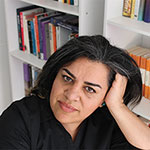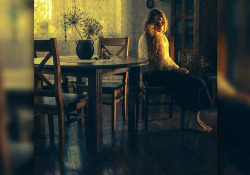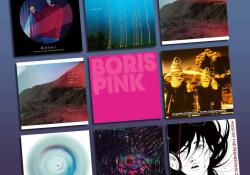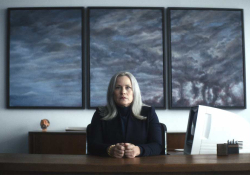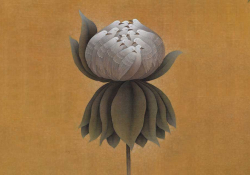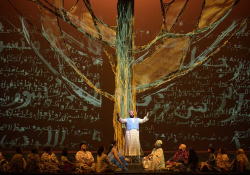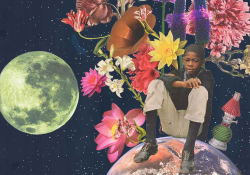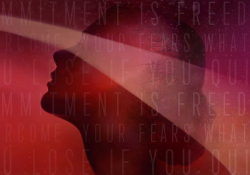The Victory of Our Revolution Is the Final Triumph of Tahirih, Homa Darabi, and the Blue Girl
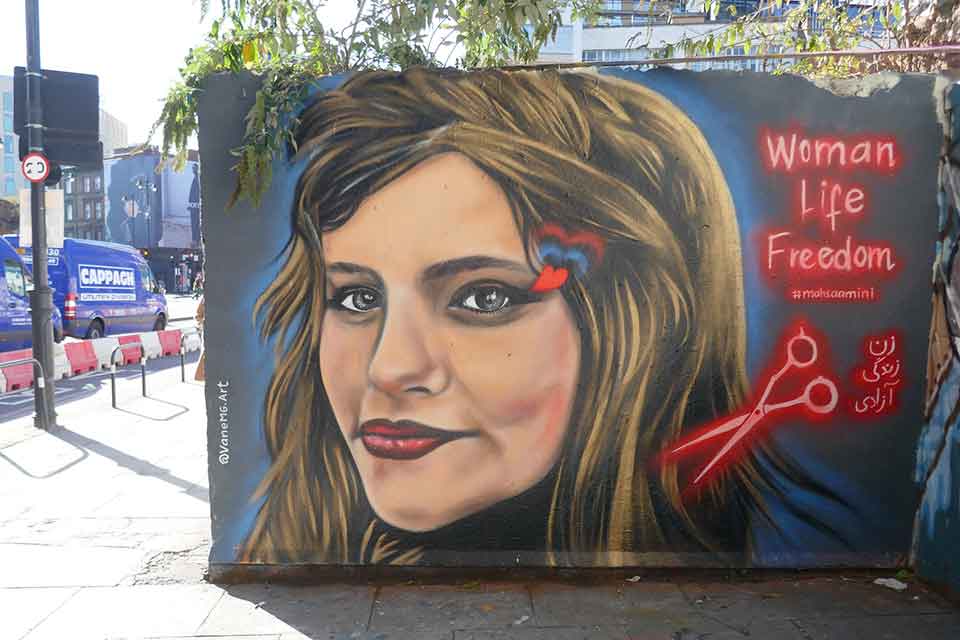
Shokoofeh Azar, an Iranian writer living in exile in Australia, traces the women’s uprising forty-three years in the making as Iranians throw off the restrictions of the Islamic Revolution of 1979.
Iran has a long history of women’s uprising against the oppressive system, and each of our women fighters somehow went to war against the patriarchal society and religion. One with poetry, the other with fire. From Tahirih Qurrat al-Ayn,[i] the first Bahá’í woman to remove the hijab, to Homa Darabi,[ii] a sociopolitical activist who set herself on fire in Tehran’s Tajrish square to protest against the mandatory hijab. From Forugh Farrokhzad,[iii] a passionate poet who wrote the first feminist thoughts in her poems, to the Blue Girl,[iv] who burned herself to protest against the ban on women entering the football stadium. They all wanted one thing: freedom.
The killing of Mahsa Amini, a twenty-two-year-old Kurdish girl, by the morality police of Tehran on September 16, 2022, ignited the fire of hundreds of years from under the ashes of carelessness and set the whole country aflame overnight. The cause of this fire? It is the same thing—freedom.
The Present
The killing of Mahsa Amini was the final bullet to the hearts of women and men who had endured all kinds of discriminatory laws, corruption, theft, and repression for more than forty-three years in Iran. In response to the killing of this innocent girl, people came to the streets like a flood and chanted in one voice to show that enough is enough!
The killing of Mahsa Amini was the final bullet to the hearts of women and men.
What we are witnessing in the streets today is unlike any protests we have seen in the past forty-three years. Although it may take months, a full-fledged revolution will reach the final desired result, the result that millions of Iranians inside and outside of the country have been awaiting for decades: the destruction of the Islamic Republic and the formation of a democratic-secular political system with the preservation of territorial integrity.
Although men and women, old and young, participate in this revolution, this revolution is primarily a women’s revolution. The world’s first feminist revolution! Because girls and women from all walks of life have formed the initial ranks of this revolution and are bravely demanding regime change.
Although men and women, old and young, participate in this revolution, this revolution is primarily a women’s revolution.
Today, schoolgirls courageously remove the compulsory hijabs from their heads and, face-to-face with the mullahs who come to the school to teach them the Qur’an or Islamic ethics, chant: “Mullah, get lost.”
Today, young female students shut down classrooms and turn university canteens into places for demonstrations against forty-three years of gender segregation and chant that they want to have a common dining room.
Today, brave Iranian girls and women gather in the streets to dance, sing, take off their mandatory uniforms, and burn their scarves in the fire while brave men and boys defend them against oppressive forces.
Today, we are witnessing a kind of empathy, companionship, and deep sympathy among all social, ethnic, and sexual groups that the regime tried to separate for forty-three years.
Today, girls are fearlessly kissing their boyfriends in the streets amid the cheers of thousands of street protesters. But this kiss is not just a simple kiss. This is a beautiful kiss of victory over all the ugliness and segregation of the regime, which defines its identity by making the female body ugly and separating the two sexes: male and female.
More importantly, the Justice Seeker Mothers (mothers of those killed in protests and strikes) stand at the front of the protest line against the regime’s bullets to avenge the blood of their children.
One of these Justice Seeker Mothers is Gohar Eshghi, a traditional, illiterate old woman—Sattar Beheshti’s mother. Sattar Beheshti was killed in 2012 just for blogging. Gohar Eshghi stood alone against the regime ten years ago, and today she leads the ranks of the revolution and invites people to unify while organizing continuous demonstrations in the streets.
Nahid Shirpisheh, Pouya Bakhtiari’s mother, is another lioness at the forefront of the fight against the regime. The regime killed her son in the peaceful street demonstrations of November 2019.
The Past
The 1979 Islamic revolution was a discriminatory, anti-human-rights revolution from its birth until now. However, the first opposition to this revolution was not intellectuals, or ethnic and religious minorities, but women. Because from the very first month of the 1979 revolution, this regime declared open and direct war against women. On March 16, 1979, less than a month after the victory of the revolution, Khomeini changed his words about the hijab and said, “Islamic women must come out with the Islamic hijab.” And this sentence was the starting point of Iranian women’s confrontation with the Islamic Revolution.
The day after this speech, the streets of Tehran and several other cities were filled with women from different walks of life, who for a week protested against the discriminatory Sharia laws with strikes and demonstrations. However, this protest was quickly suppressed by the authorities.
In the research I have done while writing my previous novel (The Enlightenment of the Greengage Tree) and the second novel I am currently writing (The Gukaran Tree of our Kitchen), I have interviewed many women who were among the revolutionaries at the beginning of the Islamic Revolution. They told me that after Khomeini’s speech in March 1979, they broke away from the Islamic Revolution and used different tools to fight against the mandatory hijab law. They launched demonstrations, issued statements, formed feminist groups, gave speeches, and launched campaigns in universities. Some of these women quit their jobs in protest, or didn’t go out into the streets for years. I interviewed one woman who, for five years after the hijab became mandatory, did not leave the house and stopped her education and job. Another woman said that she and her sisters immigrated to Europe because they did not want to submit to the mandatory hijab and other discriminatory laws.
But despite these women’s protests, men remained silent and were only observers of the laws that became more and more strict against women day by day. Since March 1979, women’s voices have been silenced in society. Nevertheless, the civil struggle of women against the mandatory hijab law and other discriminatory laws (such as the right to divorce, child custody, male polygamy, etc.) did not stop there. Although women were no longer able to form sustainable feminist civil organizations and NGOs, or unite in protest in the streets, this did not deter them from protesting in an underground manner. They culturally, secretly, and individually continued their daily struggle. They dodged and played around the rigid hijab rules by teaching their children about these discriminatory rules. Many protesters still do.
Furthermore, they worked at ensuring the education of themselves and their daughters (nowadays, about 70 percent of students in universities are girls). Although these struggles were individual and scattered, we can now see that these individual efforts and works have finally come to fruition after forty-three years and represent a kind of cultural cohesion. Women who have been making similar efforts sporadically for the past forty-three years have now united and aligned with one another.
According to official and unofficial laws, women in Iran do not have the right to wear bright colors. They should not wear makeup or nail polish. They should not show their hair, ears, neck, elbows, or legs. They should not wear tight clothes that show their breasts or hips. They must not have intercourse with any man before marriage. They must not laugh loudly in the streets; their wages in offices are lower than men; they are allowed to study, work, or travel only with their husbands’ permission; and the child after divorce belongs to the father or the father’s family, etc. One of the unwritten and stupid rules for women is that they are not allowed to wear high boots in winter because apparently it makes women beautiful. In other words, anything that supposedly makes a woman beautiful is forbidden in Iran.
To control and enforce cumbersome laws on women’s bodies, the regime created the morality police to keep everything under control in all the streets.
To control and enforce cumbersome laws on women’s bodies, the regime created the morality police to keep everything under control in all the streets. Persian-language social networks are full of pictures and news of the daily battle of morality police with women in the streets. They arrest women, torture them, beat them in the streets, or even run them over with police cars. The streets of Iran are full of scenes of violence that systematically target women. But what did Iranian women and girls do in exchange for all these brutal and insulting restrictions? Every single day for forty-three years, they ignored the moral police and continued to try to live a normal everyday life. They put on makeup every day, wore colorful scarves with various designs, and had cosmetic procedures on their faces. In several consecutive years, more rhinoplasty was performed in Iran than in any other country (Why Is Iran Famous for Rhinoplasty? | AriaMedTour; The beauty obsession feeding Iran's voracious cosmetic surgery industry | Iran | The Guardian).
Women pulled their scarves or shawls back over their heads as much as possible so that a large part of their hair, ears, and necks were always beautifully exposed. Women and girls designed mandatory manto/uniforms, which, according to the law, should be long, dark in color, and cover their whole body. However, the women created beautiful and colorful designs—tight, short, slit, short sleeves, etc., so that girls and women would look beautiful in them. (See some designs here: مدل مانتو تهران اینستاگرامی / مدل مانتو مجلسی جدید (araas.ir) or here: تیپ اسپرت دخترانه ،بهترین استایل های 2021 (niksho.com).)Women also kept the market of cosmetics, jewelry, fashionable clothes, shoes, etc., going. In other words, the Islamic Republic is against everything that makes a woman beautiful and adds it to its long list of prohibitions. On the other hand, Iranian girls and women do everything they can to restore beauty to their bodies and to the streets.
The Islamic Revolution, which displayed its identity for forty-three years by banning all female beauty, has faced the revolution of female beauty and has lost control today. I said before the formation of this revolution, and I say it today: the coming revolution is the revolution of forbidden beauty, kisses, songs, and the dances of women and girls who cannot tolerate the pressure and coercion any more. The victory of our revolution means the final victory of Tahirih, Forough Farrokhzad, the Blue Girl, Mahsa Amini, Nika Shakarami,[v] and Homa Darabi.
The Future
Iranian women want to take back the streets, theaters, cinemas, and offices. They want to bring dance, light, joy, color, and song to the streets, society, and life again and show the world that Iran can be a part of the happy, beautiful, and democratic world. Iran and Iranian culture are beautiful, and you in the world will soon see its beauty and admire it. So join us in this celebration and say with one voice: #Zan_Zendegi_Azadi (#Woman_Life_Freedom).
Melbourne
Author’s note: I would like to thank my friend Professor Anne Pedersen for help editing my English in this essay.
Editorial note: Read Shokoofeh Azar’s Puterbaugh essay “Why Iranians Continue to Seek Refuge in Australia” in the Summer 2020 issue of WLT.
[i] Tahirih Qurrat al-Ayn (1817–1852) was the first Iranian woman to remove her headscarf and declare that with the coming of the Bahá’í religion, the rules of Islam had been abolished.
[ii] Homa Darabi was an Iranian pediatrician, academic, and political activist affiliated with the Nation Party of Iran. She is known for her political self-immolation in protest to the compulsory hijab, which led to her death.
[iii] Forugh Farrokhzad was an influential Iranian poet and film director. She was a controversial modernist poet and an iconoclast, feminist author. Her selected poems, Let Us Believe in the Beginning of the Cold Season, was recently published. Farrokhzad’s iconic poem “Reborn,” translated by Sholeh Wolpé with a bilingual audio recording, appeared in the “Writing Beyond Issue” of WLT (March 2015).
[iv] In social networks, Sahar Khodayari (1997–2018) is known as the Blue Girl. She was a fan of Iran’s Esteghlal Football Club (with their blue uniforms), who protested her arrest and sentencing to prison for trying to enter the stadium and watch the football matches of Esteghlal Iran in the Asian Champions League. She set herself on fire and died on September 18, 2018. For a related story, read Sepideh Zamani’s “The Wig” in the Summer 2019 issue.
[v] On September 20, 2022, sixteen-year-old Iranian teenager Nika Shakarami disappeared in Tehran during the protests following the death of Mahsa Amini. Her family was informed of her death ten days later. She had died under suspicious circumstances suspected to involve violence by security forces.
